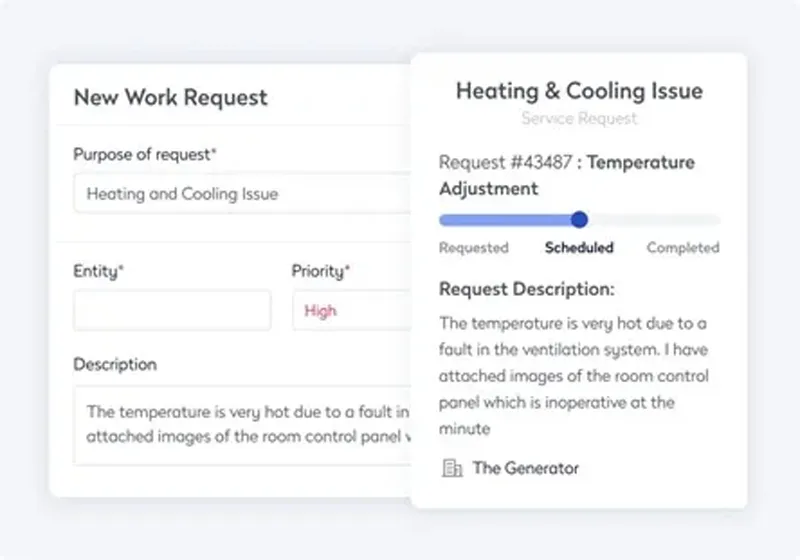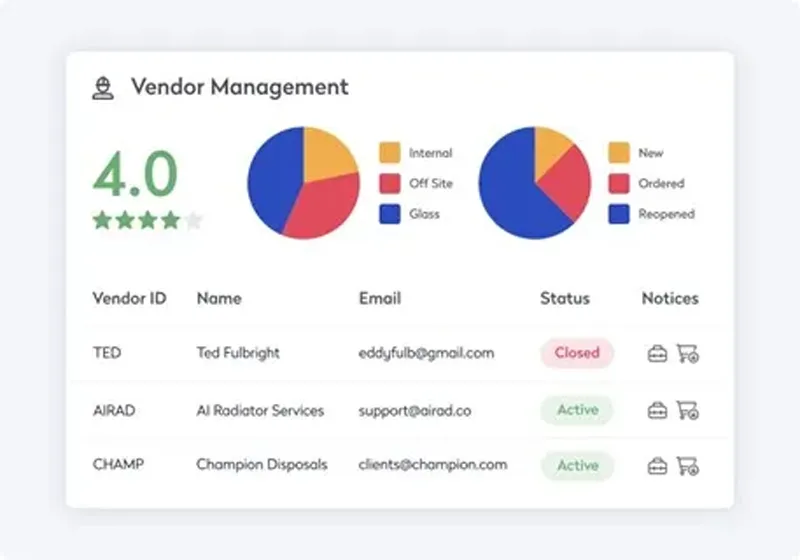
The broad scope of facilities management (FM) makes it a hard position to define. The functions of FM go far beyond ‘managing facilities’. A facility manager wears many hats and uses a broad array of technology to support all their efforts and duties.
In the era of hybrid work where employee behavior and building occupancy are dynamic, the duties of FM are more complex than they’ve ever been. The shift to flexible working has made it increasingly difficult for businesses to plan, operate, and maintain workspace and assets effectively. It requires facility management to work together with many different teams within an organization including everyone from human resources to technology teams, to physical security and reception managers, to maintenance and janitorial services. Plus, there are many vendors to manage, track, and coordinate – including when there are department building moves or space reconfigurations.
To truly understand what a facility manager does today, what they’re responsible for, and what effect they have on a company, it’s best to break down their scope of work. That means taking a closer look at the four main pillars of facilities management: People, processes, buildings, and technology.
Function #1: Facility managers support employees
Supporting people is the primary objective of a facility manager. This serves multiple purposes, including attracting and retaining top talent, increasing efficiency, and creating a positive workplace. Facility managers provide assistance with desk arrangements, employee directories, space utilization, emergency planning, visitor management, and more. They also act as a bridge between the workplace and the employees, resolving issues that arise. Facility managers also collaborate with other departments like maintenance, security, and janitorial services to ensure the building is secure, functioning well, and clean.
- Coordinating hybrid work arrangements for desk and meeting space bookings
- Managing employee directories
- Facilitating moves and space utilization
- Handling emergency planning
Facility managers are the point of contact for addressing employee concerns and ensuring a safe work environment. They handle issues related to building security, fire safety, emergency preparedness, and accessibility compliance. By prioritizing employee safety and comfort, facility managers foster a positive workplace culture and contribute to employee satisfaction and well-being.
They are responsible for creating an accommodating work environment, managing the physical infrastructure, overseeing budget and resources, implementing sustainability initiatives, participating in strategic planning, and ensuring employee safety and well-being. Their multifaceted role is essential in supporting the overall success of an organization and maintaining a productive and enjoyable workplace for employees.

Function #2: Facility managers manage strategic planning, budgets, and building maintenance upkeep
Additionally, facility managers manage and monitor the budget, resources, and assets allocated to facility operations, such as maintenance, repairs, renovations, and utilities. This helps ensure optimal resource management and cost savings. Furthermore, facility managers implement sustainability initiatives to reduce the company’s environmental footprint. Plus, facility managers are involved in long-term strategic planning for facility development and expansion.
“We try to forecast at least five years out to see what needs to be replaced,” says Corey McKnight, a facilities director for the town of Winchester, Virginia, on a recent Asset Champion podcast. “Carpet at the police department, water heaters, chillers, boilers. It’s a never-ending cycle of equipment replacement and repairs.”
McKnight, who has a dual role as both the facility director for the town and director of the parking authority, highlights the importance of considering the lifespan of the assets and the maintenance required over time when planning for their replacement.
“You have to gauge the age of this or how much maintenance have you done on it, over its life expectancy, and then try to figure out over the next five years where is our best value to spend our money,” says McKnight.
Want the real world scoop? Hear directly from experts in FM on our industry-leading podcasts Asset Champion and Workplace Innovator.

Function #3: Facility managers establish processes to manage buildings
In addition to ensuring a safe work environment, facility managers are responsible for establishing processes to bring order to the workplace and buildings. This involves creating a system of expectations and developing processes to cover any new scenarios that arise.
Facility management also involves upkeep and improvement of the physical building.
But this is also the most robust scope of expectations for facility managers. It involves not only tending the building, but cultivating partnerships, future planning, and asset management. Some examples of this broad range of responsibilities include:
- Finding and maintaining vendor contracts
- Repair, maintenance, and building improvement
- Workplace cleaning and décor
- On- and off-site property management
If it has to do with the physical building, it falls within the facilities manager’s realm. Facilities are the second largest expense behind the workforce—it’s the job of a facility manager to turn the workplace into a competitive advantage, instead of a cost center. It’s about ensuring facilities meet the needs of the people using them.

Function #4: Facility managers support technology integration
Technology integration is critical to modern facility management. Workplace management systems aggregate data to make decisions about how to run the business and shape the workplace. Facility managers research, select, and implement the right technology to collect and analyze data from networked devices and FM software. This data is used to better understand the workplace and optimize the environment for those using it.
Workplace management systems aggregate data which drive crucial decisions about how to run the business and shape the workplace. Integrating physical technology typically falls on the IT department. However, facilities managers are the first and last word on how they’re selected, used, and leveraged. Some examples of what this looks like in a modern setting include:
- Researching IoT devices, such as sensors, based on data collection needs
- Integrating sensors, visitor management, access control processes, and workspace reservation systems, into everyday facilities processes
- Determining the cost, ROI, and advantage of smart technologies
- Using aggregated data to better understand the workplace
Using an Integrated Workplace Management System (IWMS), facility managers can collect and analyze data from networked technologies to get insights about the workplace. This fuels better decision-making on how to optimize the work environment for the people using it.
It’s important to note that not all office technology relies on data collection. Access control systems support safety, while automation tech streamlines processes. And while there’s a data component to any networked device or software, the true benefit of most tech is in its function. It’s up to facility managers to understand and leverage this function for optimal ROI.
Putting it all together for facilities management
Facility managers support workers directly and indirectly. They establish processes for order and organization. They’re charged with upkeep and improvement of the facilities themselves. They create complex integrations to leverage data for success.
When you put these four functions together, they paint a picture of what facility managers really do. Broadly speaking, their focus is on optimizing the workplace to support every aspect of the business it touches. But on a deeper level, it’s about giving the company a steady foundation for success.
Need a more unified approach to FM? Read our detailed guide to integrated facilities management.


